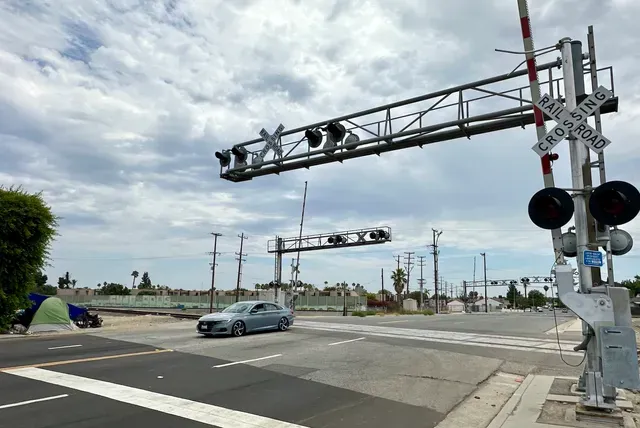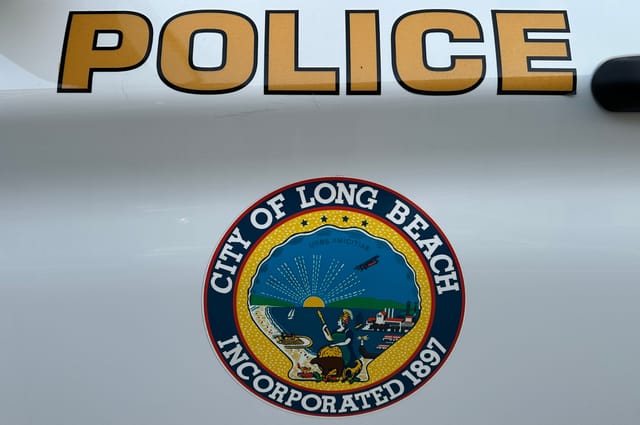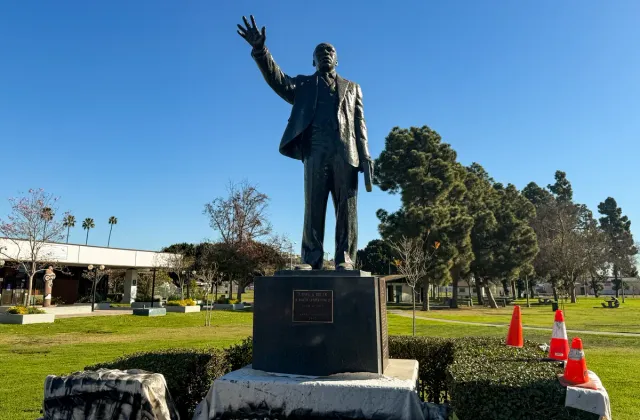'Quiet Zone' along Union Pacific Tracks in Long Beach could be slow moving, cost millions
The City Council will have to approve funding for an assessment of the two crossings before the true cost of implementing a "quiet zone" are known.

Creating “quiet zones” to reduce the amount of train horn noise where the Union Pacific Railroad crosses at street level in Long Beach could take nearly two years and potentially cost millions of dollars to improve safety at those intersections, according to the city.
The Long Beach City Council asked in July for the city to look at the feasibility of creating quiet zones in west and north Long Beach where Union Pacific train horns blown late at night have created quality of life issues for communities neighboring the tracks.
By federal law, trains must blow their horns 15-20 seconds when approaching at-grade crossings like the ones at Wardlow Road and Seabright Avenue on the Westside and the crossing at Market Street near the border with Lakewood. This is to warn vehicles that a train is approaching, according to Federal Railroad Administration regulations.
Even with these warnings, a representative from Union Pacific said in July that the railroad averages about one death every 48 hours in California.
The council's request in July also asked the city to coordinate with Union Pacific to help ensure that encampments and other nuisance activities that have led to people being near the tracks are addressed.
Councilmembers said a partial quiet zone, where horns wouldn’t be sounded between the hours of 10 p.m. and 7 a.m. could help with nighttime noise pollution. But if the new zone is implemented, trains would still have to sound their horns if people are on or near the tracks regardless of the time of day.
“That’s important because even if we make those investments, it doesn’t mean you won’t hear the horns 100% of the time,” said Deputy City Manager Tyler Bonanno-Curley.
However, getting a quiet zone approved can be costly and includes a drawn-out process of working with state and federal regulators to determine the types of safety improvements that are needed to qualify the areas as a quiet zone.
The installation of safety features like medians to block vehicles from circumventing the safety gates at railroad crossings, new lights and signals or four-quadrant gates that completely block access to the tracks are examples of safety improvements that could be needed in Long Beach.
Improvements to the asphalt at each crossing, including new striping, could also be part of the list of required fixes to implement a quiet zone.
Long Beach would have to work with the FRA as well as Union Pacific and the California Public Utilities Commission to establish the quiet zone and that process, including any needed construction, could take up to 18 months.
However, the city will need to commission a diagnostic assessment for each crossing before it can determine what safety improvements would be needed. The assessment would cost $25,000 per intersection, according to a city memo posted this week, and there’s a chance that the enhancements could cost millions.
Bonanno-Curley said that the City Council would have to vote to dedicate that funding at an upcoming meeting if it wants city staff to move forward with discussions with Union Pacific.
The city of Pomona, which established a quiet zone along the same Union Pacific tracks in 2007, did so at a cost of $3.7 million but there are five at-grade crossings in Pomona. San Jose, which implemented a partial quiet zone in 2022, spent $12.8 million for safety upgrades.
Like in other cities, the costs will depend on the unique circumstances of each crossing, Bonanno-Curley said. San Jose worked on about one dozen crossings and some required less than $1 million in work while others were multi-million dollar projects, he said.
Long Beach could look to Congress or other grant opportunities to help fund the improvements if the city moves forward with the quiet zones but Long Beach would also be on the hook for the ongoing maintenance of any safety improvements installed at the crossings, something that would require an ongoing budget.
“So, it’s still an open question of what the potential estimated costs would be,” Bonanno-Curley said.

We need your support.
Subcribe to the Watchdog today.
The Long Beach Watchdog is owned by journalists, and paid for by readers like you. If independent, local reporting like the story you just read is important to you, support our work by becoming a subscriber.





